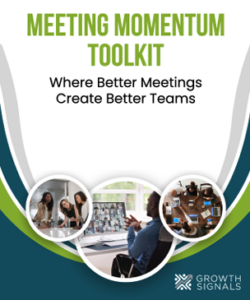In today’s fast-paced business world, organizations are placing more and more emphasis on achieving key performance indicators (KPIs) and meeting business objectives.
While this can drive employee motivation and performance, it can also create a great deal of uncertainty in the workplace.
In this article, we’ll explore what creates uncertainty for employees and how organizations can help reduce this uncertainty and create a more supportive and productive work environment.
The Impact of Uncertainty on Employee Performance
Uncertainty can have a significant impact on employee performance, as our brains are wired to constantly try to predict what’s coming next. When we can’t predict what’s happening around us, our brains use more resources to process all the information, which can cause us to feel overwhelmed and distracted. This can make it difficult for employees to focus on their work and achieve their goals.
So, what creates uncertainty in the workplace? Some common factors include:
- Not knowing if your job is secure
- Constantly changing priorities (or not knowing your priorities)
- A new business strategy that isn’t clearly communicated
- Not knowing your bosses’ expectations (or not getting a response to an email)
- Ignoring the elephant in the room
If employees are feeling uncertain about any of these factors, they may struggle to focus on their work and meet their performance goals.
Steps Organizations Can Take to Reduce Uncertainty
While organizations can’t promise certainty, there are steps they can take to reduce uncertainty and support their employees. Here are some tips for leaders:
Don’t Make Promises You Can’t Keep
Leaders should be honest and transparent with their employees about what they can and can’t deliver. Don’t make promises that everything will be smooth sailing, as you can’t predict the future. However, you can be honest about what you do know and what you’re working on.
Acknowledge the State of Your Company
If there have been layoffs or other significant changes within the company, take the time to check in with employees and acknowledge how they’re feeling. Consider having one-on-one meetings to see how people are doing, or make space in team meetings to discuss the situation.
Be Explicit with Priorities
Make sure your employees understand their top priorities, and reinforce these priorities in meetings. Ask individual team members if they have any questions or concerns about their priorities.
Keep Up Communications
Even if you’re busy, it’s important to continue communicating with your employees. If you don’t have time to respond to an email, let the employee know when you will be able to respond and follow through on that promise.
Notice Overwork
If employees are worried about job security, they may work longer hours or take on more responsibilities to prove their worth. While this can be a positive sign of dedication, it can also lead to burnout. Leaders should check in with employees who seem to be working longer hours and make sure they’re okay.
Conclusion
Reducing uncertainty in the workplace can be a challenge, but it’s an important goal for organizations looking to support their employees and achieve their business objectives.
By acknowledging the impact of uncertainty, being transparent with employees, and taking steps to reduce uncertainty, organizations can create a more supportive and productive work environment.



